Chelycypraea testudinaria (Linnaeus, 1758)
Tortoise cowry, 77-132mm
Chelycypraea testudinaria grows the longest of the Marshall Islands
cowries. It lives in numerous locations, but living animals are most often found
beneath large rocks on tops of large, flat-topped pinnacles (such as those at
Gea Pass and Kwadak Island) or in shallower surge channel caves and on the knee
of the seaward reef dropoff. Depths for most specimens range from 0-16m. The
smallest specimens live under large boulders at about 8-13m on the hard flat
reef on the windward seaward reef. Specimens are also occasionally found under
rocks or hiding in crevices intertidally. Empty shells are seen far more frequently
than living animals. Dead shells, often occupied by the hermit crab Dardanus
guttatus, are common in seaward reef surge channels and along some lagoon
interisland reefs, such as that between Bigej and Meck Islands. Chelycypraea
testudinaria is distributed widely in the Indo-Pacific with the apparent
exception of the Hawaiian Islands and Western Australia.
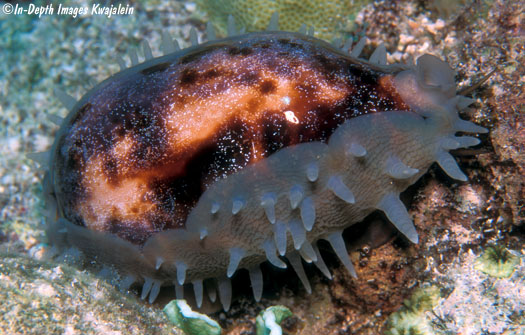
This cowry's mantle is brownish
gray with slightly irregular lighter and darker longitudinal lines. Simple spiked
papillae of the same brownish gray color but with lighter tips are scattered
over the mantle. The mantle color almost but does not quite obscure the color
pattern of the shell beneath it. Anterior tentacles are dark gray, nearly black.
We once found a specimen that appeared to be empty but after bringing it home,
discovered the animal was still inside. We dropped it into an aquarium, where
it took several days before the animal peeked out of its shell. Turned out one
anterior tentacle and the eye at its base were gone, amputated probably by a
predator who left the shell, possibly as we approached. We kept the shell for
some months in the aquarium, where it fully regenerated its lost tentacle and
eyestalk, then released it back on the reef.
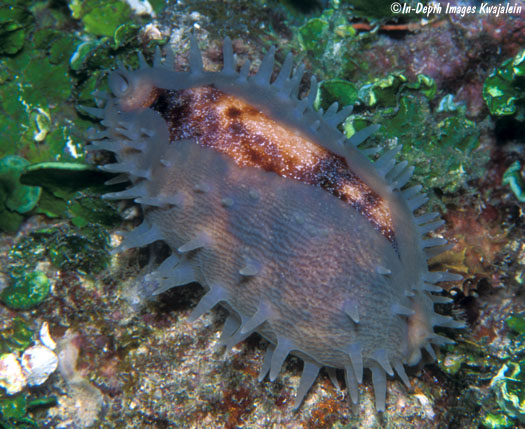
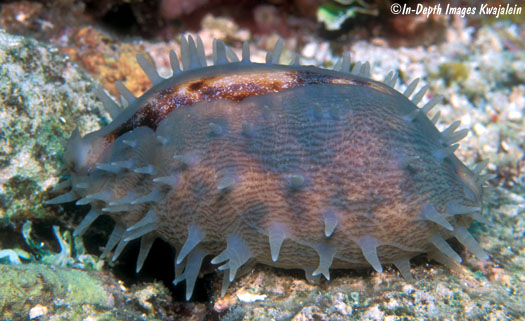
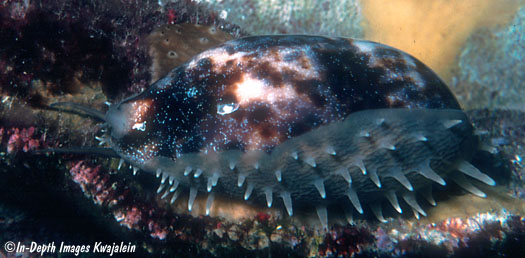
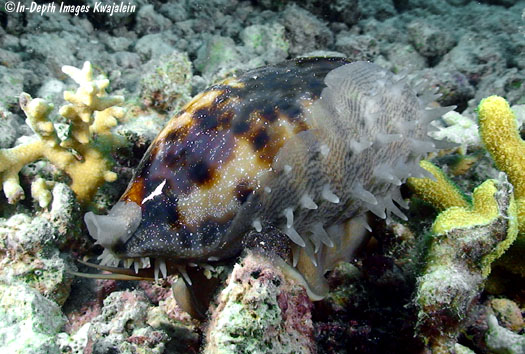
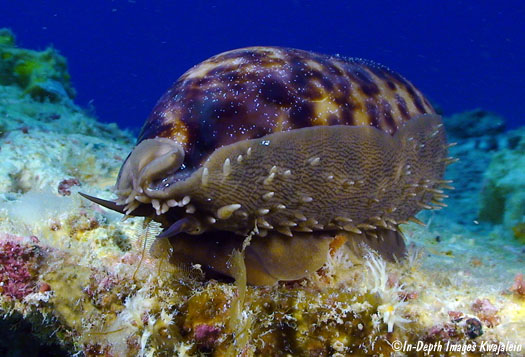
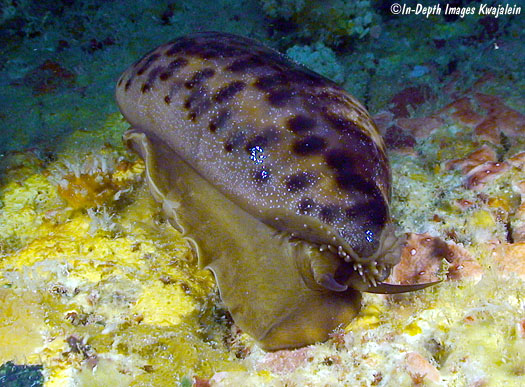
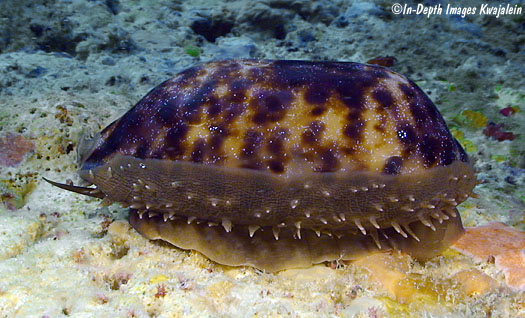
Peeking out of a hole in the reef
at night.
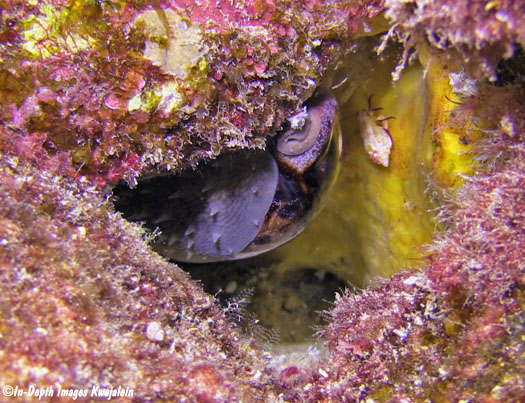
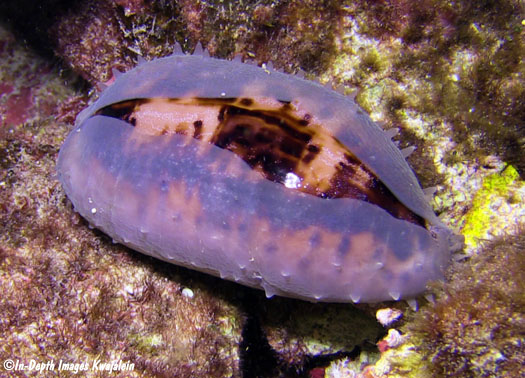
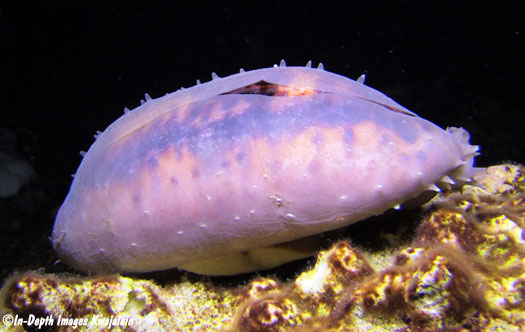
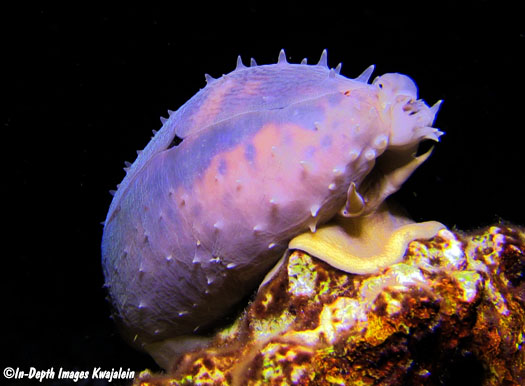
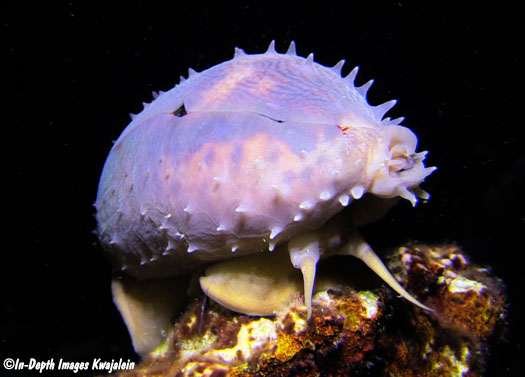
Juvenile shells live deep under
rock piles or well back in ledges and caves.
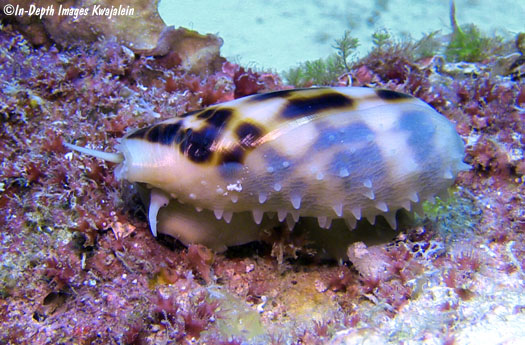
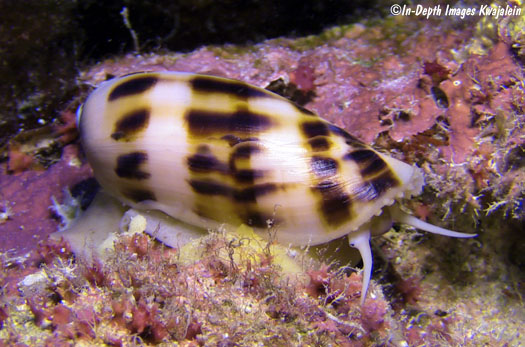
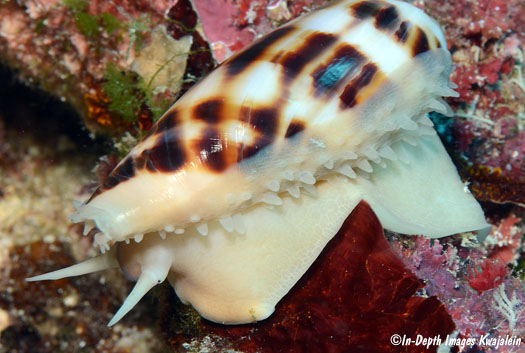
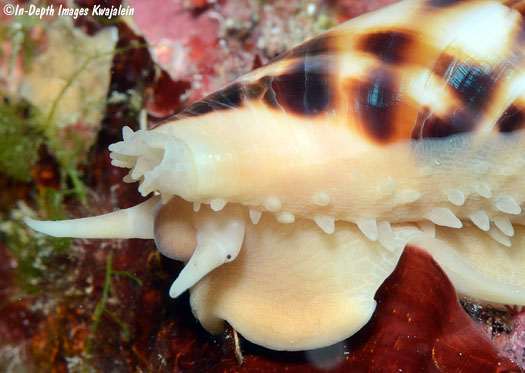
82.2mm, 2 June 2013
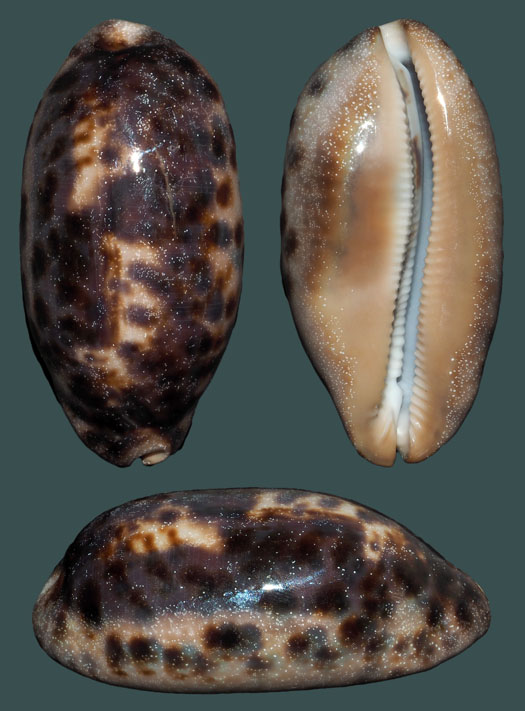
Three shells, large, small and stunted. The stunted one at upper right had
been damaged when juvenile but recovered and produced an odd shell.
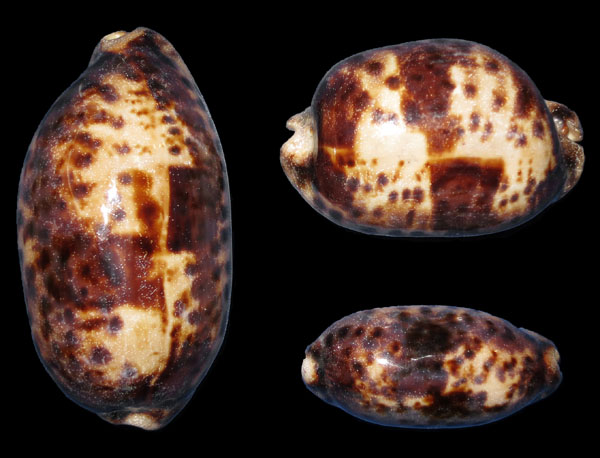
Created
1 April 2008
Updated 3 April 2024
Back to
cowry thumbnails
Kwajalein Underwater Home



















